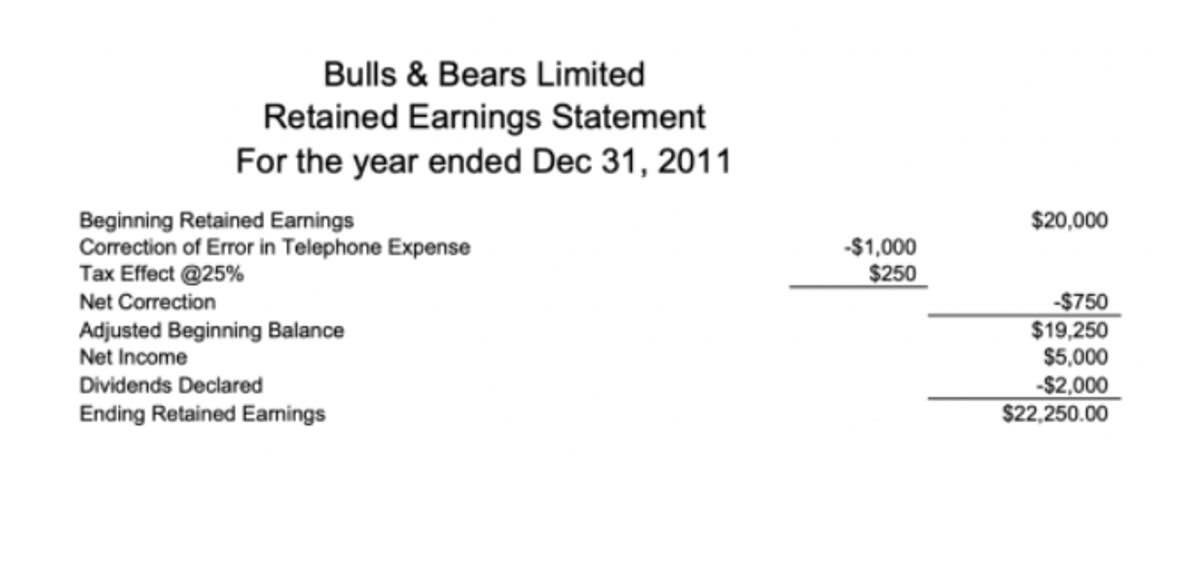
If you work in the gas industry, you have a unique perspective on how close we are to pass a natural gas bill by Congress. This rule again preferential treatment of dividend/interest income under the law. The Buffett Rule is a policy that would equitably implement reasonable rules and would not disadvantage people who give large amounts of money to charity. Although Romney earned over $44 million in just two years, he only paid an effective rate of $14%.

Understanding Dividends: Types, Accounting, and Financial Impact

The balance on the dividends account is transferred to the retained earnings, it is a distribution of retained earnings to the shareholders not an expense. The board of directors decide on the dividend amount /rate based on the company’s most recent earnings. Of course, dividends are also a component of an investor’s total return, especially for investors with a buy-and-hold strategy. With some stocks, dividends may account for a substantial percentage or even a majority of total returns over a given time period.
Is there any other context you can provide?
Property dividends require a revaluation of the distributed assets to fair market value, with any gain or loss recognized in the income statement. When a company declares petty cash a cash dividend, it commits to paying a specific amount of money to its shareholders. The accounting process begins with the declaration, where the company debits Retained Earnings and credits Dividends Payable. This entry reduces the retained earnings, reflecting the portion of profits allocated for distribution, and creates a liability. On the payment date, the company debits Dividends Payable and credits Cash, thereby settling the liability and reducing the cash balance. Accurate timing and recording of these entries are essential to ensure that financial statements reflect the company’s financial position and cash flows correctly.
Accounting for Dividends: Journal Entries and Financial Impact
As noted earlier, young, growth-oriented companies may have a zero, or very low payout ratio, while more established companies will often have higher payout ratios. There are also differences between industries and sectors, so this ratio is most useful when comparing companies within a specific industry. It may also be an important signal when a company that has been regularly paying dividends cuts the dividend. Investing in the stock market can be a great way to build long-term wealth. It can also be an income stream for some investors, depending on the kind of assets they invest in. The articles and research support materials available on this site are educational and are not intended to be investment or tax advice.
- It’s calculated by dividing the annual dividend per share by the price per share, then converting the result to a percentage.
- Some companies may pay dividends annually while other companies may pay dividends bi-annually or quarterly.
- On this date, the “Dividends Payable” liability is settled, and the company’s cash or other assets are reduced accordingly.
- Dividends represent a crucial aspect of shareholder returns and corporate financial strategy.
Special dividends
Any investment process that does not take into account currency strategy is likely to fail. Ask your investment advisor or financial planner what their current strategy is this week–you might be surprised by the response. For example, the value of one share (CLP Holdings), which pays a 6% yield, rose from $8 to $9.17 as money managers rushed into utility companies seeking safety. As a result, double taxation of dividend income might be frightening if you consider a portfolio of foreign equities. Investors need to know if the tax break will continue due to the significant disparity. Stock Split – A stock split is when a company divides its existing shares into multiple new ones.
A company’s board of directors decides how much and how often dividends are paid based on how much money the company makes and what its goals are. While less common, some companies pay dividends by giving assets or inventories to shareholders instead of cash. They use the fair-market value of the asset to determine how much each shareholder should receive. It’s important to note that these payments can fluctuate in response to changes in the company’s profits, or even broader market conditions if there are major changes in the company’s specific sector. Dividends come in various forms, each with distinct characteristics and implications for both the issuing company and its shareholders. The primary types include cash dividends, stock dividends, and property dividends.
Cash dividends

Dividend payments also influence key financial ratios, such as the dividend payout ratio and the return on equity (ROE). The dividend payout ratio, which measures the proportion of earnings distributed as dividends, provides insights into the company’s earnings retention and distribution strategy. A high payout ratio might suggest limited reinvestment in growth opportunities, while a low ratio could indicate a focus on internal growth. Similarly, ROE, which measures the return generated on shareholders’ equity, can be affected by dividend payments. By reducing retained earnings, dividends can lower the equity base, potentially inflating the ROE. Investors and analysts must consider these ratios in the context of the company’s overall strategy and industry norms.
- If investors are looking to invest in a company with a relatively high dividend yield, they may invest in Company A.
- Our estimates are based on past market performance, and past performance is not a guarantee of future performance.
- It’s also less likely that such a firm would cut dividends (even during severe economic downturns).
- Our partners cannot pay us to guarantee favorable reviews of their products or services.
- Stock dividends can be advantageous for companies that wish to reward shareholders without depleting cash reserves.
What are the different types of dividends?
Splits are usually undertaken when a what type of account is a dividend company’s share price gets too high and becomes unwieldy or unsustainable. You are in good shape if you get a high yield (above 5%) and the payout ratio is low. SoFi has no control over the content, products or services offered nor the security or privacy of information transmitted to others via their website. We recommend that you review the privacy policy of the site you are entering.
- The specifics depend on the type of account that dividend-paying stocks are held in, among other things.
- • It must be paid by a U.S. corporation or a qualified foreign corporation.
- With some stocks, dividends may account for a substantial percentage or even a majority of total returns over a given time period.
- Dividends are a way that companies compensate shareholders just for owning the stock, usually in the form of a cash payment.
- For example, though the income you gain from dividends qualifies for a credit, your labor does not.
- Additionally, dividend payments can signal that a company is doing well financially.
While this formula helps compare dividend yields, there may be other factors to consider when deciding on the suitable investment. There are many reasons a company could have a high or low dividend yield, and some insight into dividend yields is necessary for further analysis. Companies generally pay these in cash directly into the shareholder’s brokerage account. In contrast, an established business might not need to retain profits and will distribute them as a dividend each year. The investors in such businesses are looking for a steady growth in the dividends.
